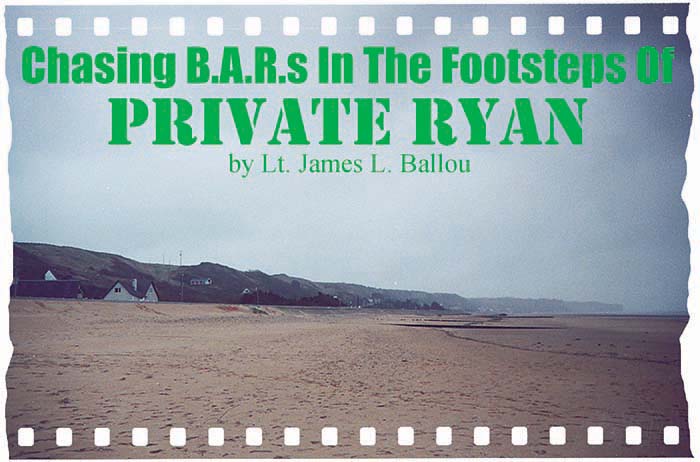Omaha Beach
By James L. Ballou
(SAR Usual Suspect Jim Ballou’s book on the Browning Automatic Rifle is in progress with Collector Grade Publications. From all accounts of those who have reviewed drafts, it is going to be a wonderful resource of information on the venerable BAR. Jim had recently returned from the UK and France, and submitted this report- we thought it was a poignant message about what is involved in the research end of working on a book such as this- Dan)
I am standing on the precipice of Pointe du Hoe overlooking the spot where the 2nd Ranger Battalion under the command of Colonel James E. Rudder stormed these heights on June 6, 1944. I am struck by the horrific ferocity of the damage that was wrought here. Even after fifty-six years the earth has barely begun to heal itself from the impact of 1,000 lb. bombs and 14” shells. The concrete pillboxes lay shattered and scattered about like a child’s cardboard toys.
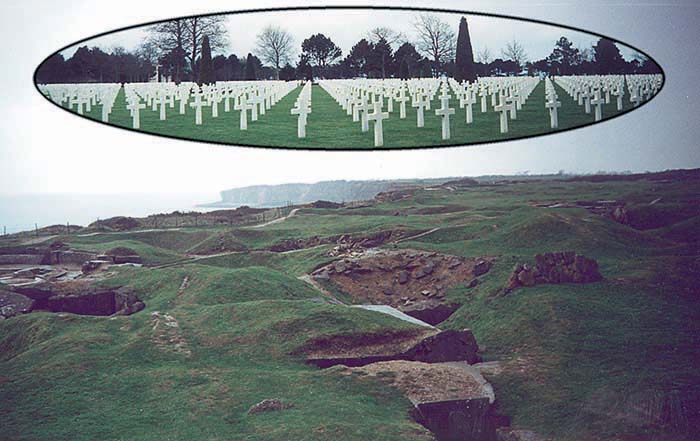
The screams and echoes of this portal to the past are calmed by the gentle surf. On that fateful day men struggled up rope ladders, 20 lb. BAR’s slung over their shoulders in addition to their regular load, and climbed 100 feet in the face of grenades and MG-42’s to reach an objective that did not exist. The six large guns (155mm) that could cover both Utah and Omaha beaches had not been installed. The Rangers utilized four man BAR teams to give them the firepower to assault this formidable rock obstacle.
I am in England and France with my wife and faithful companion on the simple quest to examine and photograph all the BAR’s associated with the Normandy campaign. SAR and a host of friends have opened many doors for me to write my book on the BAR. The money for this trip came from my dearly departed mother-in-law, Cathleen, to whom Pat and I dedicated a romantic evening in Paris.
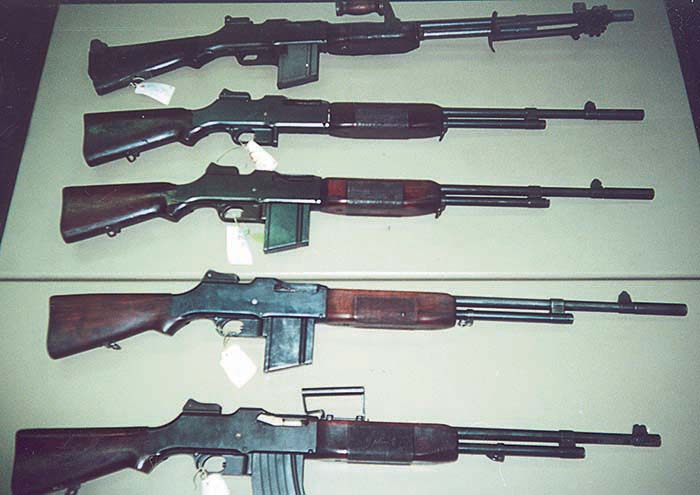
I felt guilty arriving in France, not in a C-47 or an LST, but rather on the Eurostar, passing 24 minutes under the channel through the recently completed “Chunnel”. Pat and I were driven in a private car to the beaches of Normandy with a guide by the name of Maghee, who played strains of Glenn Miller as we passed through the rural countryside.
One of the highlights of the trip was the Airborne Museum at Ste. Mere-Eglise, run by a retired Army Captain, Philippe Jutras, of Amesbury, Massachusetts. This spry eighty-four year old gentleman met us with much joy and allowed us free access to the museum. This former Maine State Senator maintains the museum and is an integral part of its history.
Indeed, BAR’s were an important source of mobile firepower for the paratroopers landing in France that fateful night, and yes, Red Buttons still hangs from the steeple of the church to commemorate Private John Steele of the 82nd’s 508the Parachute Regiment.
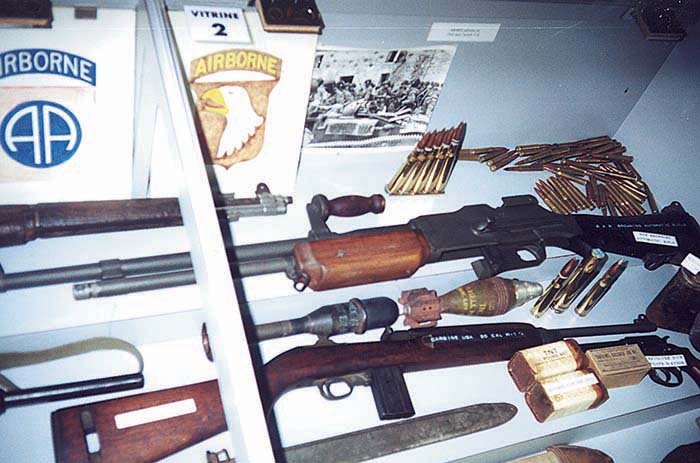
We visited the quiet beauty of the Cemetery above Omaha Beach, pausing to reflect on the deeds of the departed. Then to the beach itself. In my mind’s eye Speilberg’s rendition of the bloody Omaha was vivid and real. From Omaha to Ste. Mere-Eglise and finally to Utah beach, which to me was similar to Crane’s Beach in Ipswich but with more sinister memories. Back through the Chunnel to England and Waterloo Station, filled with vivid images of WWII, we started another adventure with old and new friends.
Herb Woodend is no stranger to us in the world of machineguns. He is a regular at Knob Creek and is the Curator of the Mecca for machineguns, the MOD Pattern Room at Nottingham. Pat and I stayed with Herb in his home and also were introduced to Pub life as it exists in England, a family place to go. The Pattern Room, despite dire predictions is still viable and most fascinating though the Sword of Domacles still hangs over the staff and collections. As I got to know some of the staff, Richard Jones, Norman Dixon and John, I was struck by the irony of the names having come to Nottingham.
In two days I was able to examine, disassemble and photograph some of the rarest BAR’s in existence. If you want to know more about .303 BAR’s and .280/30 BAR’s read my book soon available.
For those of you who are James Bond fans, you must meet Norman Dixon, the lab coated technician of the Room. His tour of clandestine firearms reminded me more of “Q” than anyone I have met.
My final day in London was spent with Paul Cornish of the Imperial War Museum. He graciously opened the doors to the museum and hauled out the six BAR’s they have in their collection. One of them, NESA #530049 could be directly connected with CIA operations. Discovered in Austria, circa. 1966. The afternoon I spent in the photo archives viewing photographs from WWI. In all, everyone went out of their way to help and make my stay more enjoyable. For Pat and I this was a once in a lifetime experience that we will cherish in our Golden Years, memories of people and place that illuminate our history.
As I stood on the same spot on the Eiffel Tower where Adolf Hitler had savored the conquered City of Paris, I wondered how may GI’s had made it through the flames and fury of the Normandy beaches to celebrate the victory that was D-Day.
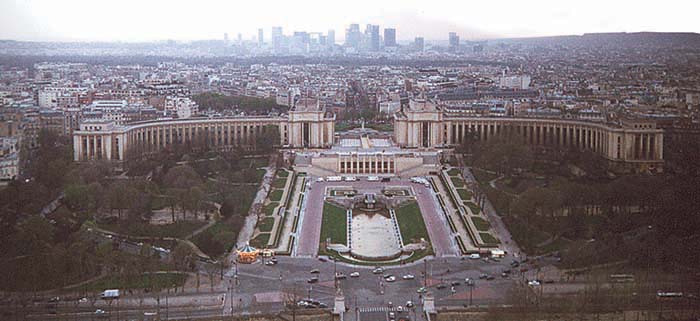
| This article first appeared in Small Arms Review V4N1 (October 2000) |



